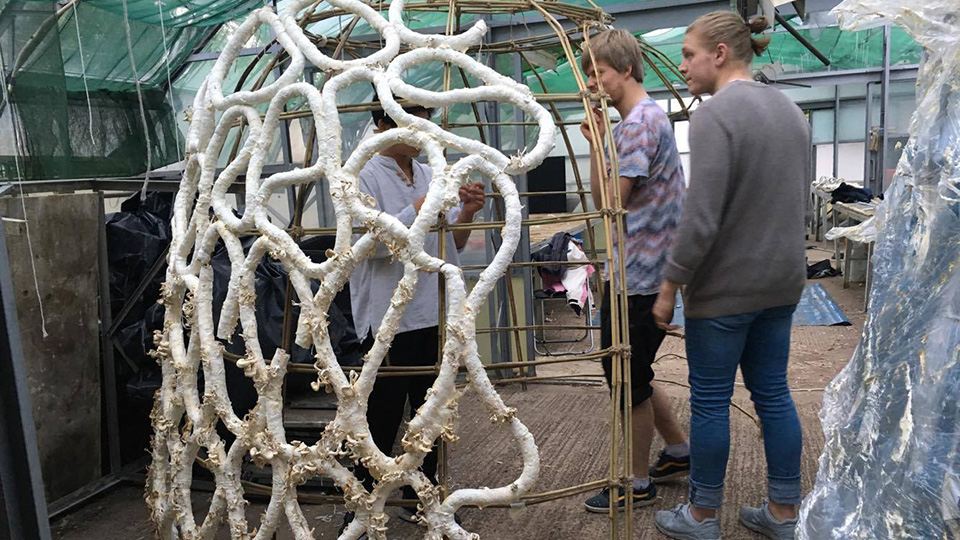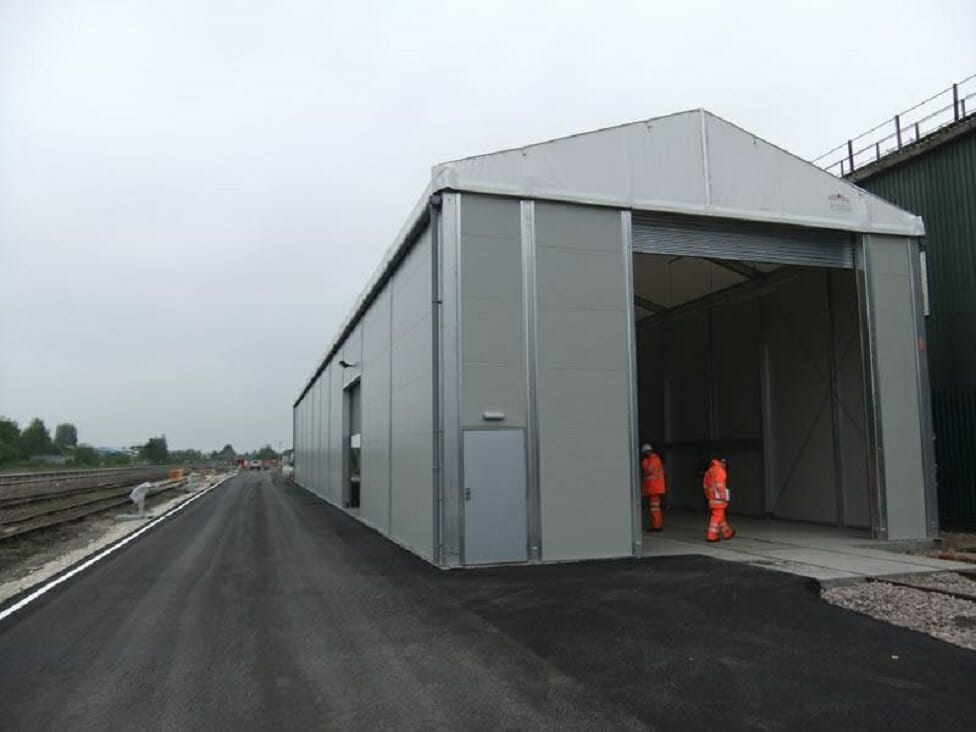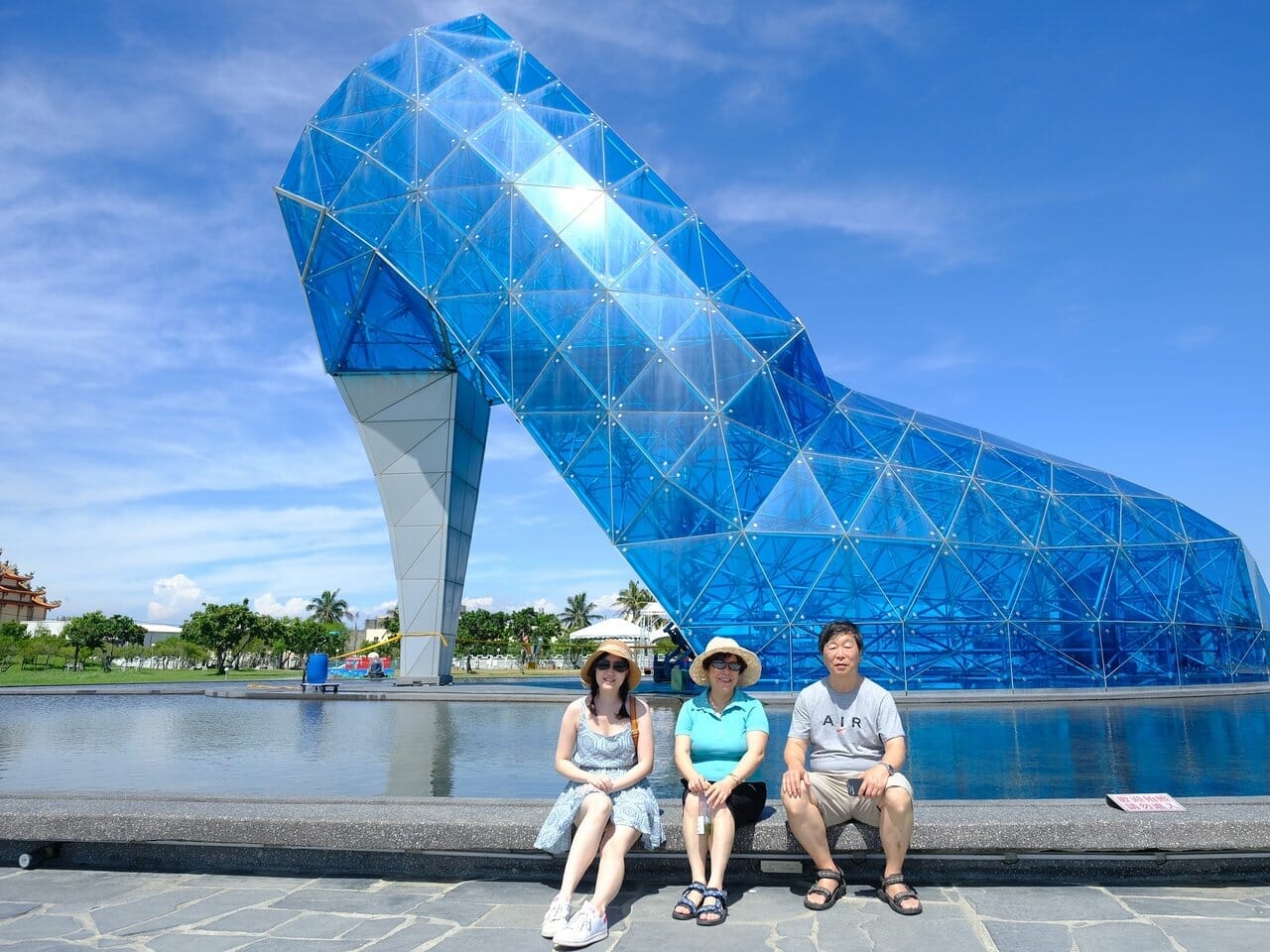Conventionally, mushrooms are cultivated for food as the primary purpose. Though they are classified as neither meat nor vegetable, they are considered as the “meat” of the vegetable world. They are used extensively in cooking, especially in Chinese, Korean, European and Japanese cuisines. From the food industry, it is now making it’s way into the building and architecture industry.
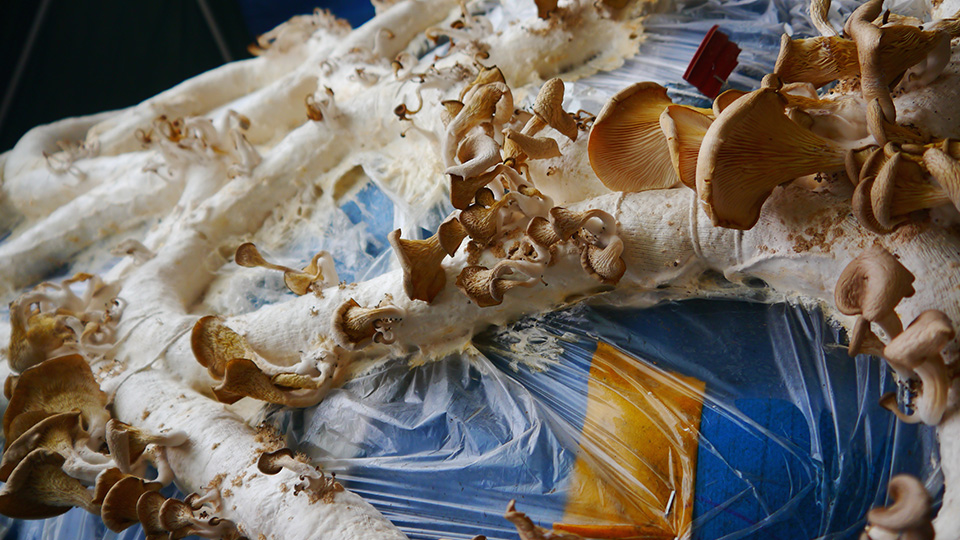
Source: Brunel
Aleksi Vesaluoma, a student from Brunel University from London is researching ways on how mushrooms can be used to grow “robust zero-waste structures as an alternative to conventional building techniques.” He is currently collaborating with Astudio, an environmentally-focused architecture firm. The project, Aleksi Vesaluoma’s Grown Structures, make use of mycelium (oyster mushroom spawn) mixed with cardboard. The material will then be molded into “mushroom sausages” by placing the mixture in a tubular cotton bandage.
The sausage mushrooms are then shaped using a mold of the preferred design, and will be grown over four weeks in a ventilated greenhouse. The results are beautifully striking structures that can be used at festivals or other events and can easily be biodegraded after.
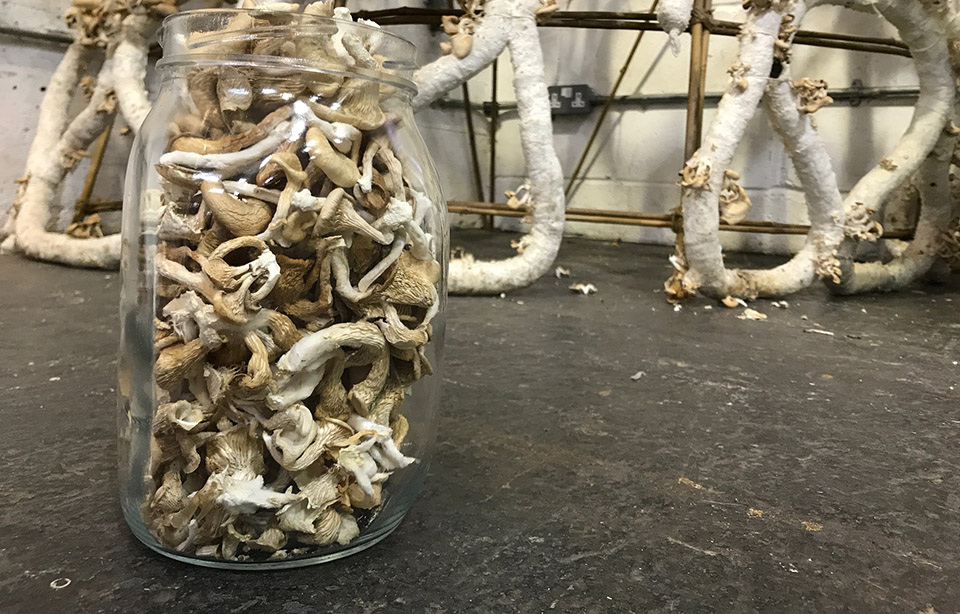
Source: Brunel
Once large quantities of gourmet mushrooms pop out from the structure, it can be picked and eaten. This doubles the purpose of this structure: it’s a unique architectural marvel, and a food source at the same time. One of the potential ideas or this project is a pop-up restaurant that is grown from mushrooms, that serves mushroom meals, according to the creators.There are a lot of designers, artists and companies that use mycelium in different ways, but this kind of project using this “sausage” technique is definitely something new in the field. They are currently developing their ideas with regards to enhancing the strength of the mushroom structure, reshaping it into different designs, or building on a small scale.
“Right now the main factors holding back the mass-commercialisation of mycelium materials are people’s pre-assumptions, as well as the power of the profit-driven materials industry,” Aleksi said.
“Mycelium materials are beneficial to us and the environment as well as just being… really cool. They’re another great example of why we need to trust the intelligence of nature in helping us create more regenerative systems of manufacture.”
Mycelium is capable of binding together with organic materials such as straw as it grows. The results are very versatile, biodegradable, and is a very abundant source. Thus, having the potential to help environmental problems with regards to lack of resources, deforestation of wood, and even toxic emissions from brick firing.”Exploring the structural potentials of mycelium materials could help in shaping a future where architecture is grown from bottom up rather than consuming resources and creating waste,” Aleksi explained. “Various solutions are being commercialised in the USA and Netherlands but in my opinion the material needs to be introduced to a much wider market, including the UK.”
Article Sources:


